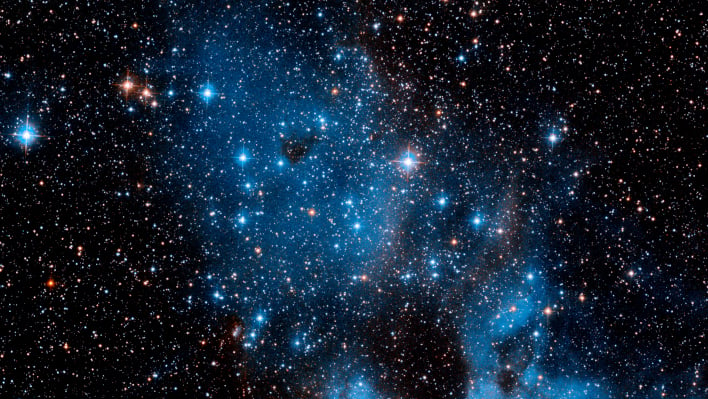NASA's Hubble Spots A Magnificently Complex Nebula Cluster Shining Brightly

Hubble remains an incredibly-valuable space telescope, as it continues to capture informative and breathtaking imagery of deep space. This time around Hubble turned its focus onto the Large Magellanic Cloud, a satellite galaxy of our very own Milky Way that possesses an abundance of star-forming regions.
"Open clusters are a type of star cluster with loose gravitational attraction between the stars, which causes the cluster to be irregularly shaped and its stars to be spread out," according to a recent NASA blog post.
Along with being an open cluster, NGC 1858 is also an emission nebula. The gas of the nebula emanates its own light at visible wavelengths, which can be seen in the image captured by Hubble as a faint cloud that populates the middle and bottom right. An emission nebula is a "cloud of interstellar gas that has been ionized by ultraviolet wavelengths radiating off of nearby stars."

With Hubble continuing to display incredible value, NASA is looking at possible ways to keep the space observatory in working condition. Currently, SpaceX is conducting a non-exclusive study in regard to the possibilities of re-boosting the Hubble Space Telescope.
"This study is an exciting example of the innovative approaches NASA is exploring through private-public partnerships," explained Thomas Zurbuchen, Associate Administrator for the Science Mission Directorate at NASA Headquarters in Washington. "As our fleet grows, we want to explore a wide range of opportunities to support the most robust, superlative science missions possible."

